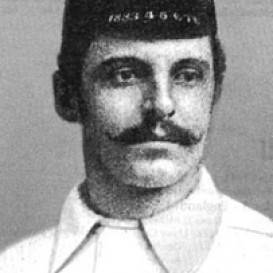On 20th October 1996, Everton and Liverpool were set to play against each other in the 184th Merseyside Derby. Ahead of the game, Everton were unbeaten in the previous 4 derbies, winning 2 of them. Both sets of fans were eagerly awaiting the occasion, however disappointment was on the horizon – not for just one team, but for both teams. Controversial decisions by a referee is nothing new in the Merseyside Derby, but this time, a controversial decision was made BEFORE the game. Around an hour before kick-off, the Merseyside Derby was called off by matchday referee Roger Dilkes due to torrential rain.

Dilkes said:
I was bitterly disappointed for the fans. I know how much Merseyside fans love their football, and this game in particular. Once you reach this level, all decisions are major ones, and a decision like this just comes with the job.
I’ve had to make the “big decision,” which is what this was, before and it is always a matter of great disappointment. It has been a decision, however, that I feel has always subsequently proved to be right.
Dilkes called the game off because he was thought the pitch was unplayable and he was concerned about the players’ safety. He arrived at Anfield at midday, already feeling apprehensive about the weather. He wanted to check how long the downpour would last for and concluded it would continue to rain until the evening. As the rain continuously fell, Dilkes assessed the pitch by kicking the ball around and came to what he thought was the best decision.
I had to assess whether the ball would move around the playing surface freely and the answer was no. I struck a ball towards the corners, where players will play it, and under normal conditions, it would have gone out. But it held up yards short and I knew I could only make one decision, despite the disappointment I knew everyone would feel.
Neville Southall also bounced a ball on the pitch surface and I believed it totally died on him. The ground may have looked superb from the stands, but when you got down to pitch level, there were pools lying on it.
The safety of the players also has to be uppermost in my mind, and when there is that much water around, you must ask yourself whether they will be totally in control of themselves and what they are doing.
I believe to start the game, we would have had to be convinced we would finish it. I simply felt that given the weather conditions, the state of the pitch and the weather forecast, I had no option but to tell the managers we could not go ahead.
Neville Southall, however, thought the postponement was unneccessary and the pitch would have been playable if the kick-off was delayed.
I thought the best course of action would have been to have delayed the kick-off for an hour, and worked as hard on draining the corner areas. As it was, the rain stopped at 3pm and the sun shone shortly afterwards.
The referee, Roger Dilkes, said he was concerned about the players’ safety. Although standing at about 5 ft 2 in tall, he was probably more concerned about his own safety – he may have drowned.
The postponement wreaked havoc. Ahead of the Derby, Everton rented a jumbotron at Goodison Park so that fans who were unable to attend the match at Anfield can watch it. But it came at a price as the postponement ended up costing them £25,000 for the jumbotron, wasted food and police costs. David Unsworth said he felt sorry for the fans, but especially for the fan he heard on the radio who came all the way from Australia to watch the match.
Everton and Liverpool fans subsequently watched the other game of the day – Newcastle v Manchester United. Manchester United, however, may have wished their game was postponed as well as the Magpies thrashed them 5-0. So at least there was something for Everton and Liverpool fans to smile about that day.
The match was re-arranged for November 20th – exactly a month after the postponement. Everton and Liverpool drew 1-1 with Gary Speed cancelling out Robbie Fowler’s opener. One of the mascots for the Derby that day was Wayne Rooney. I wonder what happened to him.

This wasn’t the first Merseyside Derby to be postponed because of the weather. Everton and Liverpool were scheduled to face each other on 23rd January 1965. However, referee Arthur Edge called the Derby off the day before because the overnight snow had melted on the Goodison Park pitch, worsening the already sodden pitch following weeks of rain. The underground heating system couldn’t save the game because it wasn’t switched on during the previous weeks’ rainfall; it would only switch on at freezing point, as the system’s sole purpose was to remove frost, not moisture, from the ground. Liverpool manager Bill Shankly said the pitch was “the stickiest I have ever seen,” calling it a “glue pot.” The match was re-arranged for April 12th with Everton winning 2-1, thanks to goals from Derek Temple and Johnny Morrissey.

